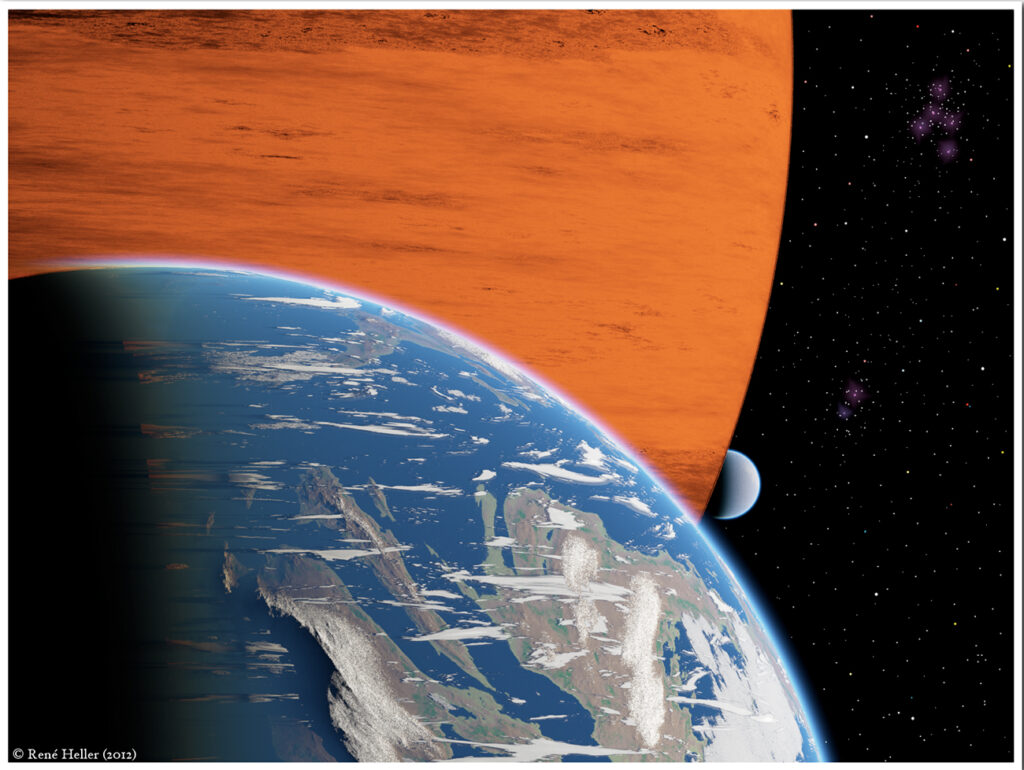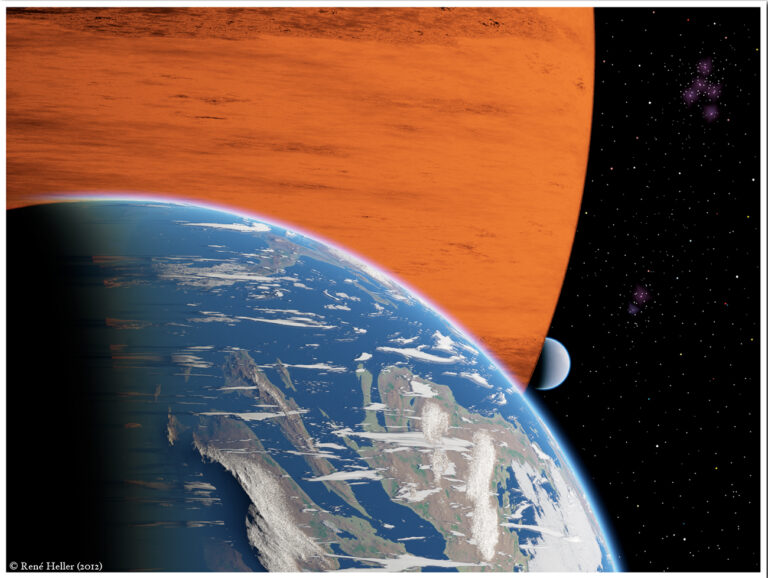Astrobiology Study Suggests Potential for Life on Moons Beyond Our Solar System
Astronomers have begun considering exomoons in their search for habitable worlds, which are likely to be orbiting planets outside of our solar system. In a recent study, researchers René Heller and Rory Barnes have discovered that exomoons have an equal chance of supporting life as exoplanets.The research, conducted by Heller from Germany’s Leibniz Institute for Astrophysics Potsdam and Barnes from the University of Washington and the NASA Astrobiology Institute, will be published in the January issue of Astrobiology.
Currently, there are approximately 850 known extrasolar planets, which are planets outside of our solar system. Most of these planets are gas giants similar to Jupiter and are not suitable for life. Only a small number of these planets have a solid surface and orbit their host stars within the habitable zone, which is the region where liquid water and a favorable environment could exist.Heller and Barnes explored the possibility of habitable moons existing around these planets. Although no exomoons have been discovered yet, there is no reason to believe that they do not exist.
The climate on extrasolar moons is expected to be different from that of extrasolar planets due to the tidal locking phenomenon, where one side of the moon permanently faces the planet. Additionally, these moons receive light from both the star and the planet they orbit, and they may experience eclipses that could significantly impact their climates by reducing stellar illumination.
Heller explained, “An observer on the surface of an exomoon would experience day and night in a completely different manner compared to Earth. For example, stellar eclipses could result in sudden darkness at noon.”

Heller and Barnes have also identified tidal heating as a determining factor for the habitability of exomoons. This additional source of energy is activated by the distance between a moon and its host planet; the closer the moon, the more intense the tidal heating. Moons that orbit too closely to their planet will experience significant tidal heating, resulting in a catastrophic runaway greenhouse effect that would evaporate surface water and render them permanently uninhabitable.Furthermore, they have developed a theoretical model to estimate the minimum distance at which a moon can still support habitability, which they refer to as the “habitable edge.” This concept will enable future astronomers to assess the potential habitability of exomoons. “There exists a habitable zone for exomoons, albeit slightly different from the habitable zone for exoplanets,” stated Barnes.
The remarkable precision of NASA’s Kepler space telescope in photometric measurements now allows for the detection of extrasolar moons ranging in size from Mars to Earth, and this discovery is expected to occur very soon. Launched in 2009, the telescope has enabled scientists to identify thousands of potential extrasolar planets. Since 2012, the first dedicated “Hunt for Exomoons with Kepler” has been underway.
The paper titled “Exomoon Habitability Constrained by Illumination and Tidal Heating” by Heller and Barnes will be published in the January edition of the Astrobiology journal.
This article is republished from PhysORG under a Creative Commons license. Read the original article.
Do not forget to share your opinion with us to provide you with the best posts !




0 Comments